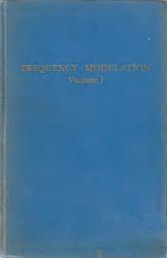the life of Philo T Farnsworth - Early Television Foundation
the life of Philo T Farnsworth - Early Television Foundation
the life of Philo T Farnsworth - Early Television Foundation
You also want an ePaper? Increase the reach of your titles
YUMPU automatically turns print PDFs into web optimized ePapers that Google loves.
PROGRAM EXPERIMENTS 203<br />
While <strong>the</strong> research laboratories <strong>of</strong> R.C.A. and <strong>Farnsworth</strong><br />
were definitely rivals, <strong>the</strong>re were certain elements where <strong>the</strong>re<br />
could be no rivalry.<br />
We were not equipped technically or financially<br />
to compete with R.C.A/s National Broadcasting<br />
Company, or any o<strong>the</strong>r company,<br />
in <strong>the</strong> field <strong>of</strong> broadcast technique,<br />
programs, and entertainment.<br />
For a time shortly after our laboratories were established independently<br />
in Philadelphia, <strong>Farnsworth</strong> had ambitious ideas<br />
regarding <strong>the</strong> development <strong>of</strong> an experimental broadcasting<br />
station as a center for our experimental program work. Both<br />
Mr. McCargar and I felt that this was quite beyond our pocketbooks<br />
and very much outside <strong>the</strong> scope <strong>of</strong> <strong>the</strong> <strong>Farnsworth</strong> program.<br />
We were convinced that we were not fitted for <strong>the</strong> entertainment<br />
field and that when actual commercial television<br />
arrived people experienced in radio programs<br />
and motionpicture<br />
production would have at <strong>the</strong>ir fingertips <strong>the</strong> technique<br />
and facilities that would take us months, if not years, to acquire.<br />
However, in <strong>the</strong> studio at our station in Philadelphia, Phil<br />
did succeed in doing quite a bit in <strong>the</strong> way <strong>of</strong> experimental programs.<br />
He employed Bill Eddy, who later gained considerable<br />
prominence in <strong>the</strong> development <strong>of</strong> television programs at <strong>the</strong><br />
National Broadcasting Company and o<strong>the</strong>r studios, to direct<br />
this work. Eddy made some interesting experiments in lighting<br />
for television and in <strong>the</strong> operation <strong>of</strong> two cameras picking up<br />
studio productions. He also made some tests <strong>of</strong> fake background<br />
with miniature sets. Such tests did little more than prove to<br />
our own satisfaction that our television camera was a practical<br />
device for <strong>the</strong> transmission <strong>of</strong> studio programs.<br />
At this time we had two cameras in operation,<br />
in addition to<br />
<strong>the</strong> telecine channel for <strong>the</strong> transmission <strong>of</strong> motion pictures.<br />
Monitors were so arranged on <strong>the</strong> control panels that <strong>the</strong> chief<br />
operator at <strong>the</strong> panels could see what sort <strong>of</strong> picture each <strong>of</strong>











